How the West Was Lost
“Thousands have lived without love, not one without water.” - W.H. Auden
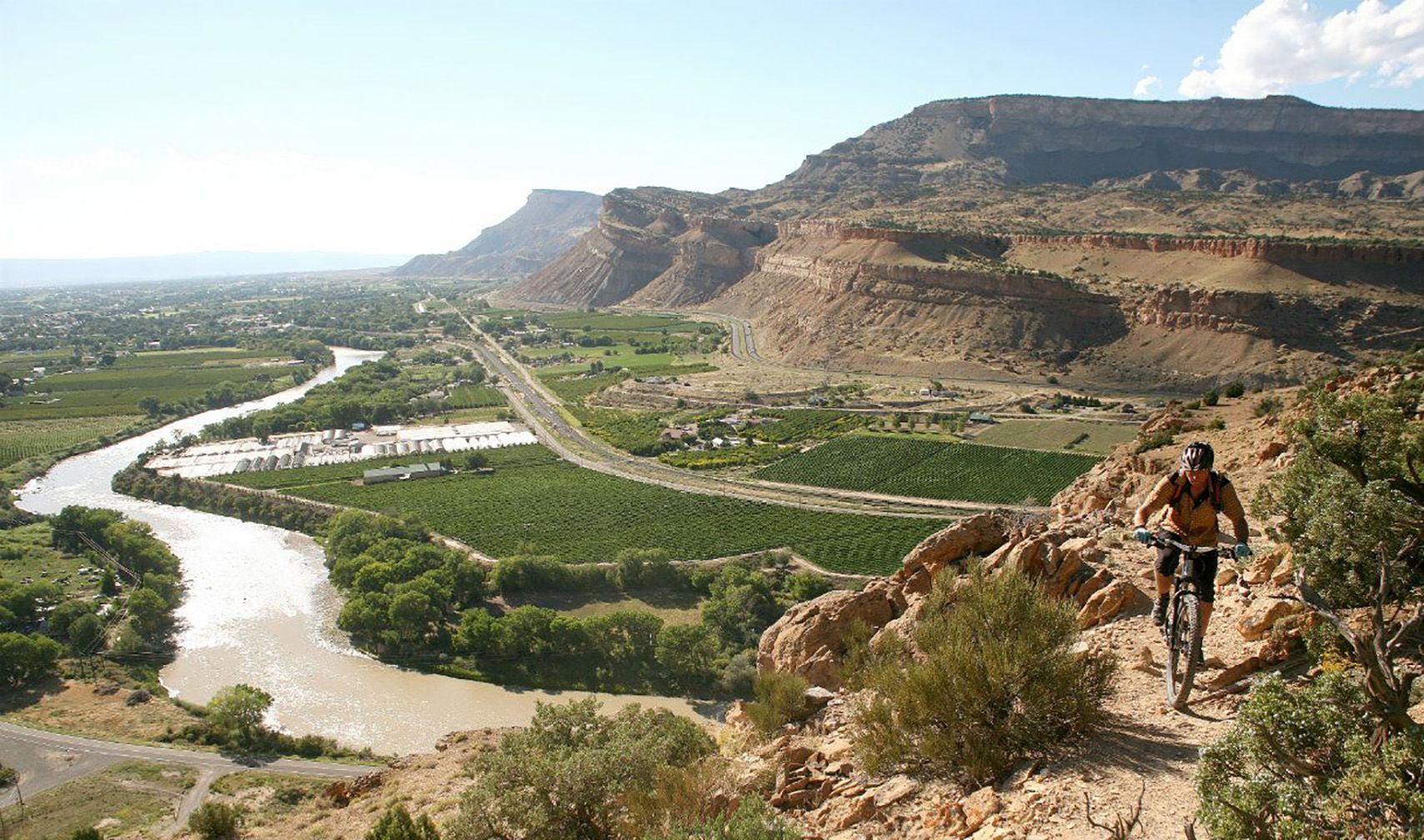
There are places in the American West that stay in your memory with the detail of great works of art. When I am rolling through the Coconino National Forest and over the Kaibab Plateau in Northern Arizona, I want to get off my motorcycle and walk into the ponderosa pine forests and never return. A sense of childish wonder gives me with the same joy I knew when I first went exploring beyond my boyhood backyard, and when I come to a stop at the rim of the Grand Canyon, I understand why people warn you to never grow up. There is too much to see and do in the world to spend your time making mortgage payments.
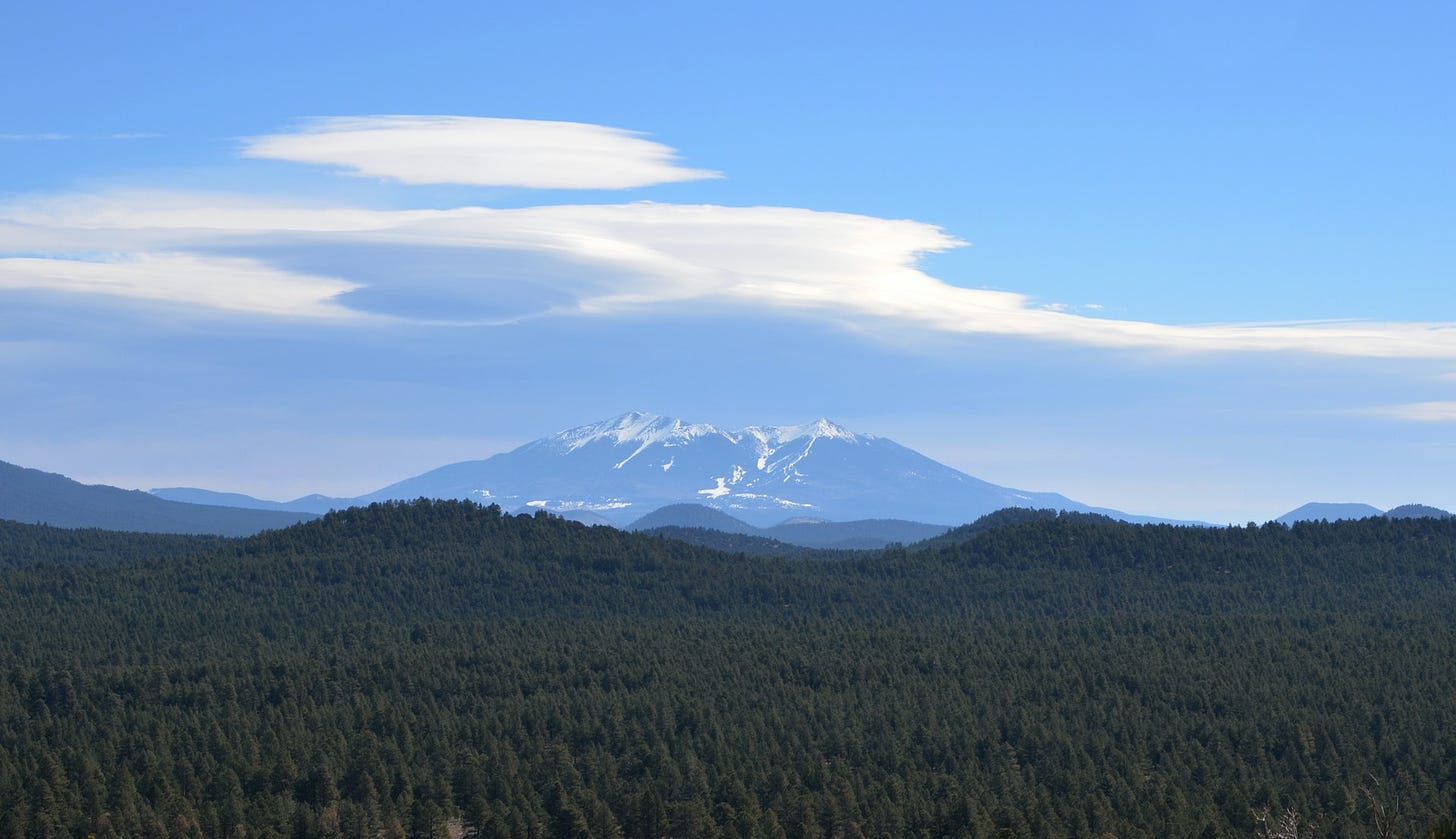
These emotions become predictable when you return to certain locales. Watching the water roll down the Truckee River Valley out of Lake Tahoe will give you a sense of great abundance. The Interstate Highway and the railroad through the canyon follow almost precisely the same grade that was cut by hand and dynamite used by Chinese immigrants more than a century and half earlier building the Union Pacific’s first transcontinental railroad. When the snow dumps in the high Sierras a few feet at a time, you look at the Truckee and wonder how there might ever be a shortage of water.
I have chased the Colorado River, too, on my motorcycle, down through Glenwood Canyon and west to Rifle and Parachute and further to Palisade where the peach orchards span the mesas and give way to vineyards with rows of grapes that seem to reach toward the horizon. In Grand Junction, the river is always powerful and provides a stately sash across the beauty of the town sitting isolated between the alpine high country and the deserts of Utah to the west. The snow melts, and the river runs, in what we assume is an endless cycle.
But it’s not. Not anymore.
The river that gives much of the American West an endless drink of cold water has grown wearied and thin. A combination of causes is drying up the Colorado, and the crisis goes almost unacknowledged by the consumers of the resource. They continue to act, in too many instances, as if there is an endless, reliable supply of water. The snowpacks across the ranges of the Intermountain West, though, have turned inconsistent, and spring thaws no longer set the river to roaring at full throat. Rains, which were relied on to fill the watershed with flowing creeks and arroyos to drain into the once mighty Colorado, no longer fall with the predictability of seasons past.
The drought is historic and might transcend the term. Meteorologists at the NASA Earth Observatory say the West is experiencing what is probably the worst drought in 12 centuries. Down in the lower reaches of the great river’s basin, Lake Mead, backed up behind Hoover Dam, is now at 27 percent of its capacity, a decline that has been happening for the past 22 years. The water level is the lowest it has been since the dam went into service in 1936. The Colorado River Basin, which includes the tributaries that feed the river, provide water to more than 40 million people, to drink, grow, bathe, and farm. Plant, fish, animals, and birds are all sustained by this gathering of waters seeking the sea.
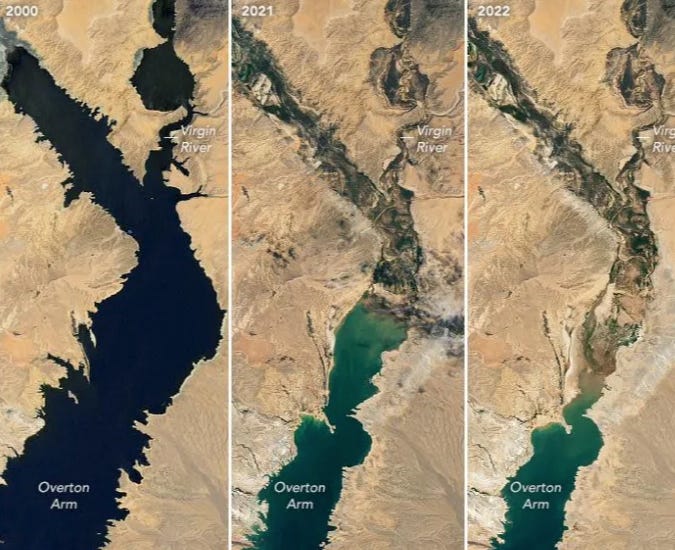
Further up the river basin, Lake Powell is also shrinking. High rates of evaporation caused by record heat, low snowpack levels, and almost zero rain in the watershed have reduced the acre-feet behind Glen Canyon Dam to a point where there may soon be no ability to generate hydroelectric power. The dam provides electricity to 5.8 million homes but may not have enough water pressure to spin its turbines if the level drops another 30 feet. Several significant cuts in consumption are being considered but the U.S. Bureau of Reclamation said there are 1 in 4 odds of having to shut down the turbines within the next 18 months because conservation will not adequately offset consumption. The hardest working river in America may soon become unemployed.
The drought has turned into an epoch in the West and heat and a lack of rain mean the process has become aridification of a region. The climate, many experts have proved, has been permanently changed. America’s politically pedestrian approach to dealing with climate transformation has been caused, in large part, by denial and a skeptical media. A report two years ago, published in the Proceedings of the National Academy of Science, provided data that the most influential news media in the U.S. spent the past 30 years providing equal credibility to unsubstantiated opinions and scientific facts. This urge for objectivity, when there are literally not two sides to every story, has meant that a man standing in a pouring rain can be interviewed and taken seriously as he argues no rain is falling. Much of the time in journalism, there are not two sides to every story. There is only one set of facts and giving credence to deniers and quacks is counterproductive to creating an informed public.
There seems something superfluous about having to argue climate change is real and it is the product of human actions. The only progress to be marked in the campaign to convince people of its foreseeable dangers is that some of the rhetoric around the crisis is now characterized as “climate delay,” which is an in-artful term that accepts the reality of the problem but is demanding any actions taken to mitigate impacts must also properly consider economies and businesses. Politicians, increasingly, are realizing the futility of arguing against the existence of climate change and are parsing their words to suggest - what’s the point of saving the climate if we can’t also make a buck?
The hydrologic remainders of the Colorado when it leaves Phantom Ranch at the bottom of the Grand Canyon is critical to sustaining agriculture and residential life in the Southwest. Seven states rely on water and hydroelectric power from the resource, and Los Angeles, which isn’t even inside the Colorado Basin, gets 15 percent of its surface waters from the river on its border with Arizona. The resource has always been more precious than oil and only our current Biblical drought is beginning to focus governments and thinking on this fact of life.
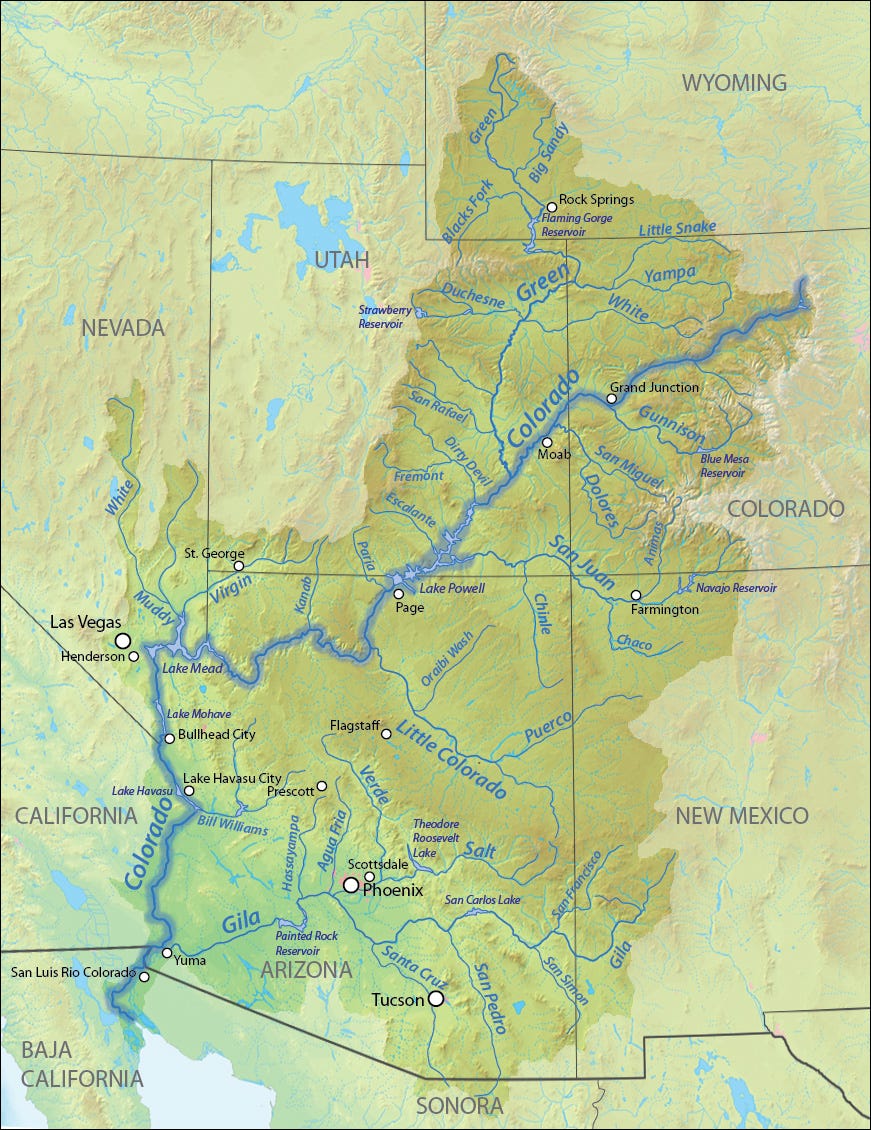
There are some hopeful signs, though. Nevada’s population has increased by 800,000 over the past two decades while water consumption declined by 26 percent. The state has contracted for only 1.8 percent of the Colorado’s water allocation but has paid residents to remove grass, adhere to mandatory irrigation schedules, and adapt to enforced water waste rules. Regardless of these localized measures, the supply problem remains chronic, and the Bureau of Reclamation plans to act unilaterally to enforce conservation measures if the states and municipalities cannot reach an historic agreement to control consumption. Farmers, who use 80 percent of the water diverted from the Colorado, are being urged to reconsider crop choices and methods of irrigation to make an impact on saving the river.
The Colorado’s demise is best measured down at the Gulf of California, also known as the Sea of Cortez. The river no longer reaches the sea and hasn’t for decades. There is no freshwater for the spawning of shrimp and the trees and lush marshlands have disappeared into sandbars and salt cedar that comes up the river channel. There is no indication there will be water to save the ecosystem soon but a joint U.S.-Mexico project, which pulses large water releases from an upstream dam, has shown great promise at rejuvenating a region that once relied on the Colorado to reach the sea and provide resources to eat and drink and make a living. UNESCO named the shrinking body of water a World Heritage site and then immediately said it was in danger.

A shortage of water has done nothing to abate growth rates in the Southwest. Central Arizona is attracting sufficient newcomers to suggest Phoenix and Tucson will become a single city in another decade with only Picacho Peak to delineate a divide between the municipalities. Carefree Highway, also the title of a song made famous by Gordon Lightfoot, has become as developed with homes and strip malls and convenience stores as the rest of the Salt River Valley. I remember my first time in Phoenix, riding my motorcycle down off the Mogollon Rim to the north, and weaving through citrus groves blossoming in the early spring and open desert of saguaro and pinon, and I would have never contemplated the degree of expansion that has happened in Arizona. Carefree still looks carefree as a town on the edge of northeast Phoenix, but the highway has become misnamed.
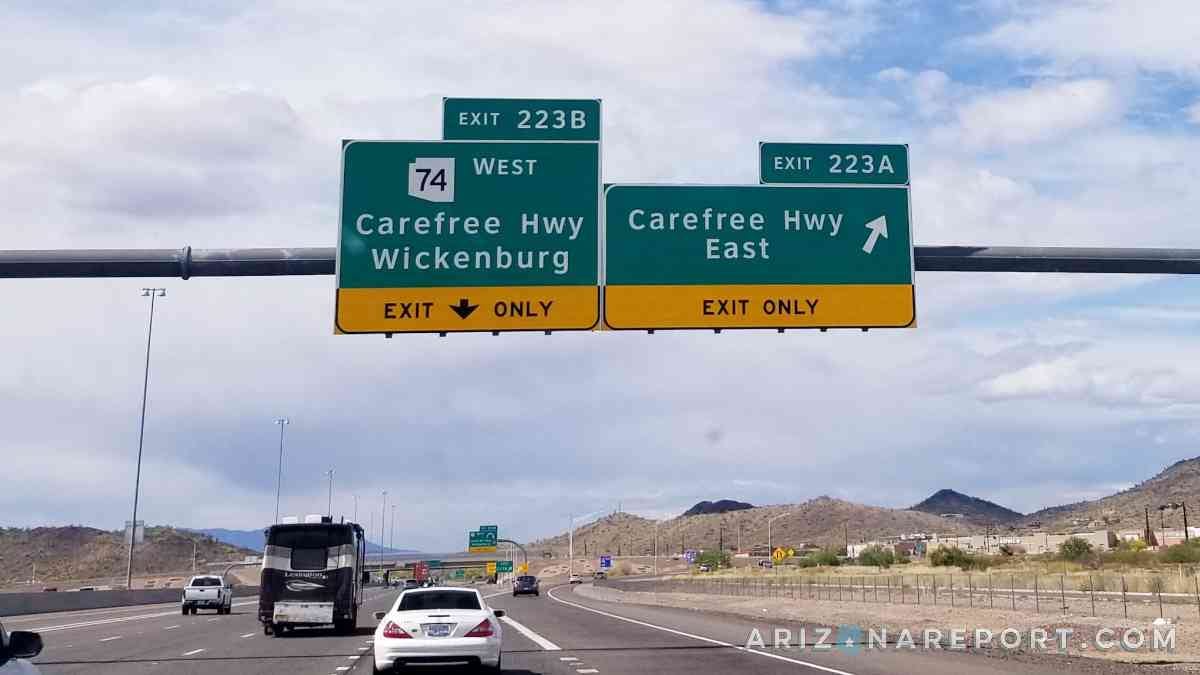
Every one of those newcomers needs water just as the people moving into Los Angeles and Tucson and Las Vegas and El Paso and Austin and San Antonio and Houston and Dallas, and I could go on but there is no point. People migrating to the Southwest for better weather and bustling economies are bringing Midwestern and Northeastern habits. They buy big houses and want lawns, which nature didn’t really intend to be grown along the Balcones Escarpment in Texas or in the Salt River Valley of Arizona or in the basin of the Colorado in Las Vegas. Newcomers even miss their flowers and trees from back home and grow vegetation around their properties down here that consume amounts of water that are far greater than use by native plants. Old habits may die hard, but water supplies might die faster.
In Texas, where climate denialism will probably become a curriculum in public schools, the water crisis is mostly ignored. Every new home built is another straw dipped into our state’s Colorado River. All the lakes but one in Texas are reservoirs, and when there is no rain and no water to replenish the releases, troubles ensue. Lake Travis, which is the main water supply for much of Central Texas’ millions of thirsty residents, is again approaching historic low levels. By mid-July, the lake was showing just under 55 percent full and islands sunken beneath the water in the lower basin have risen out of the depths. Mandatory releases still happen during droughts, too, and the Lower Colorado River Authority must let out water to sustain the ecosystem of the estuary in Matagorda Bay at the Gulf of Mexico. Rice farmers also have historic rights to significant acre-feet, until certain crisis conditions are met. Current rates of consumption and evaporation in record heat have caused Lake Travis to lose four feet of depth in the past 30 days.

I have canoed, rafted, and motorcycled up and down most Texas rivers and even decades ago they seemed like a sparse supply of water for the millions inhabiting our arid land. My last visit to Santa Elena Canyon in Big Bend a few months ago, the river had stopped flowing and cracked and dried mud filled the mouth open between the 1500 foot tall canyon walls. Monsoonal rains have put some water back in the river through Big Bend Ranch State Park and river outfitters are hoping again to revive their businesses but just as many are making plans for a different line of work. Rivers are not supposed to come and go, but in the third decade of this century, that has become a reliable characteristic.
In the 80s, I canoed a long section of the Brazos below Possum Kingdom Dam to celebrate a milestone anniversary of the publication of John Graves’ masterful “Good-bye to a River,” a non-fiction narrative of his final journey down the river that measured his daily life. As the 90s began, I took part as a scriptwriter in a production of a documentary film entitled, “A Run Unto the Sea: The Adventures of the Abilene Boys,” and narrated by Walter Cronkite. The subject matter was a 600-mile journey down Texas’ Colorado River by canoe. The participants, in their mid and late seventies, had made the trip 50 years previously during the Depression to get out of staying at home in West Texas. Their reprise of the journey became an adventure not just in exploration and the human condition but also in environmental calls for conservation and careful stewardship of a river that was already stressing under early demands of growth. There is little evidence their positive advice has been heeded by the general population.
I also remember my first canoe trip down the Upper Guadalupe and the giant cypress roots curling over the riverbanks and the gurgling whitewater that seemed to come up around every bend. Even in a dry summer, the springs from the Edwards Aquifer appeared to keep the river moving briskly toward Canyon Lake in the east. The stretch of the river near Hunt and Comfort, on the day this was written, was flowing, which is an abuse of the word, at 2.57 cubic feet of water per second. That is not a river; those are only pools of water that might someday be reconnected and make for a river. The Pedernales River, near Fredericksburg, has a current flow rate of zero. The Frio River near Concan also shows zero as a flow rate.
Unbridled population growth, climate change, and limited supplies of water are not a recipe for sustainable living in the American West and Southwest. If there is no policy innovation or dependable rainfall, infrastructure will, eventually, collapse. People in Texas, who are already dealing with an overburdened and outdated electrical grid, will soon turn on faucets and wonder if water will appear. Another mass migration will likely be prompted by water and electrical insecurity. My view is that the Midwest and the Northeast, long maligned as the “Rust Belt,” will rise again. Water is abundant in Michigan and Minnesota and Wisconsin, Pennsylvania, upstate New York, and across those regions. Water is business and life and makes for a comfortable home. People and corporations will one day be forced to move to where the water is, and it is not down here in the Southwest.
Praying for rain is not a good policy, in the meantime, and without some type of new approach to conservation and development, or a magical change in the climate, the drought and aridification will only have compounded impacts on lives down here. We need to do something, and now.
Or the West will be lost forever.